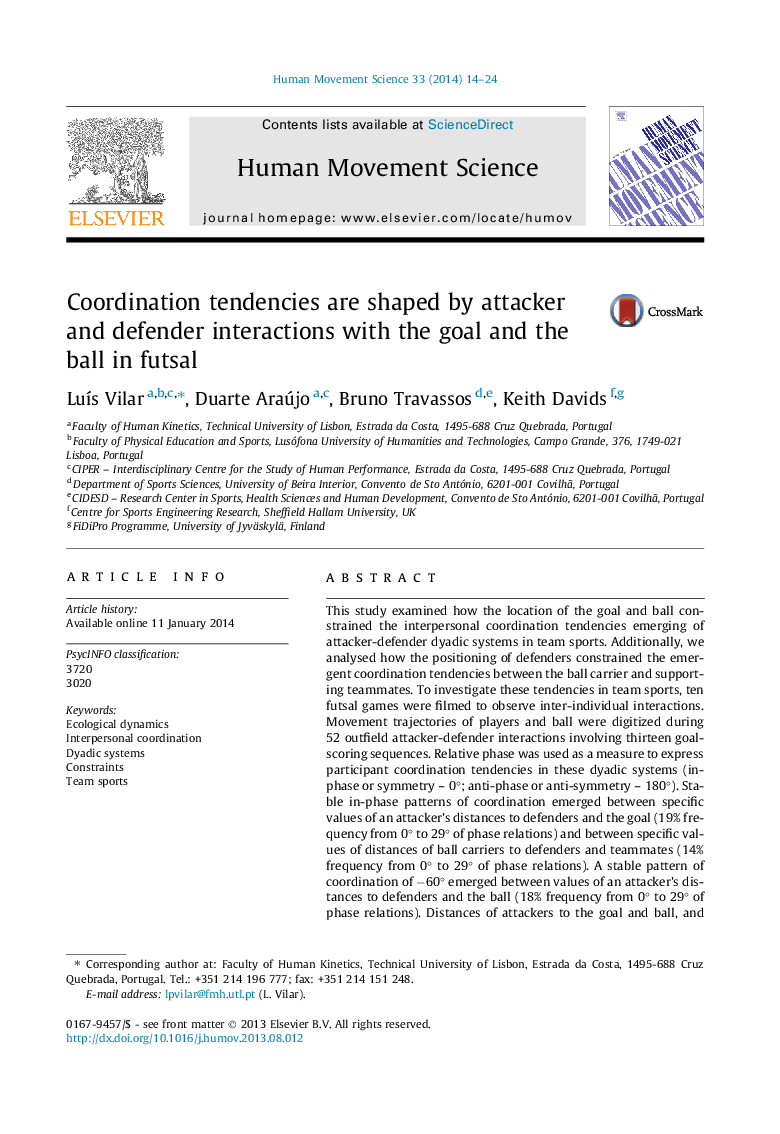| Article ID | Journal | Published Year | Pages | File Type |
|---|---|---|---|---|
| 7292451 | Human Movement Science | 2014 | 11 Pages |
Abstract
This study examined how the location of the goal and ball constrained the interpersonal coordination tendencies emerging of attacker-defender dyadic systems in team sports. Additionally, we analysed how the positioning of defenders constrained the emergent coordination tendencies between the ball carrier and supporting teammates. To investigate these tendencies in team sports, ten futsal games were filmed to observe inter-individual interactions. Movement trajectories of players and ball were digitized during 52 outfield attacker-defender interactions involving thirteen goal-scoring sequences. Relative phase was used as a measure to express participant coordination tendencies in these dyadic systems (in-phase or symmetry - 0°; anti-phase or anti-symmetry - 180°). Stable in-phase patterns of coordination emerged between specific values of an attacker's distances to defenders and the goal (19% frequency from 0° to 29° of phase relations) and between specific values of distances of ball carriers to defenders and teammates (14% frequency from 0° to 29° of phase relations). A stable pattern of coordination of â60° emerged between values of an attacker's distances to defenders and the ball (18% frequency from 0° to 29° of phase relations). Distances of attackers to the goal and ball, and distances of ball carriers to defenders, seemed to be coupled in a specific manner to guide interpersonal coordination tendencies between players during competitive performance in the team sport of futsal.
Related Topics
Life Sciences
Neuroscience
Cognitive Neuroscience
Authors
LuÃs Vilar, Duarte Araújo, Bruno Travassos, Keith Davids,
